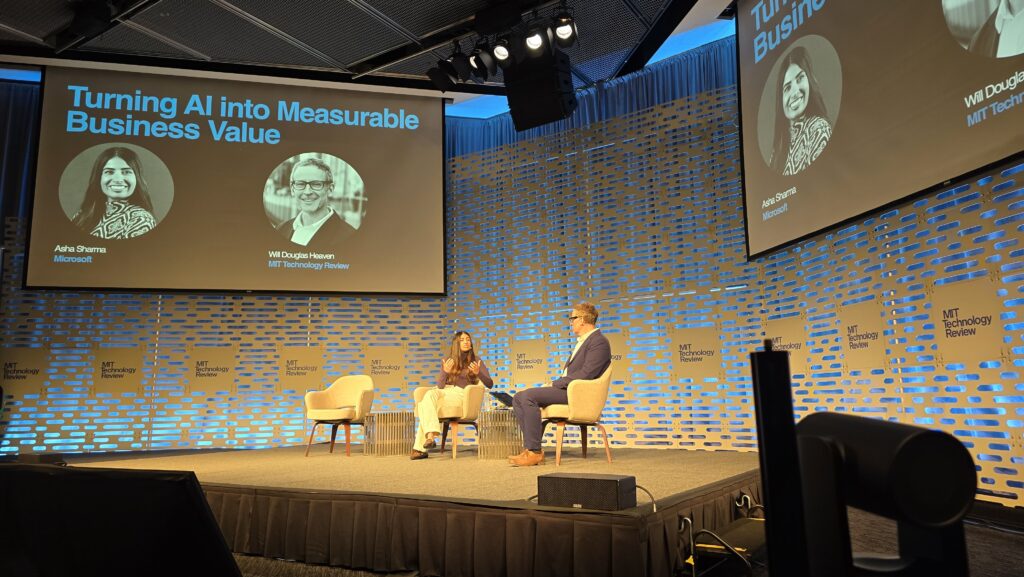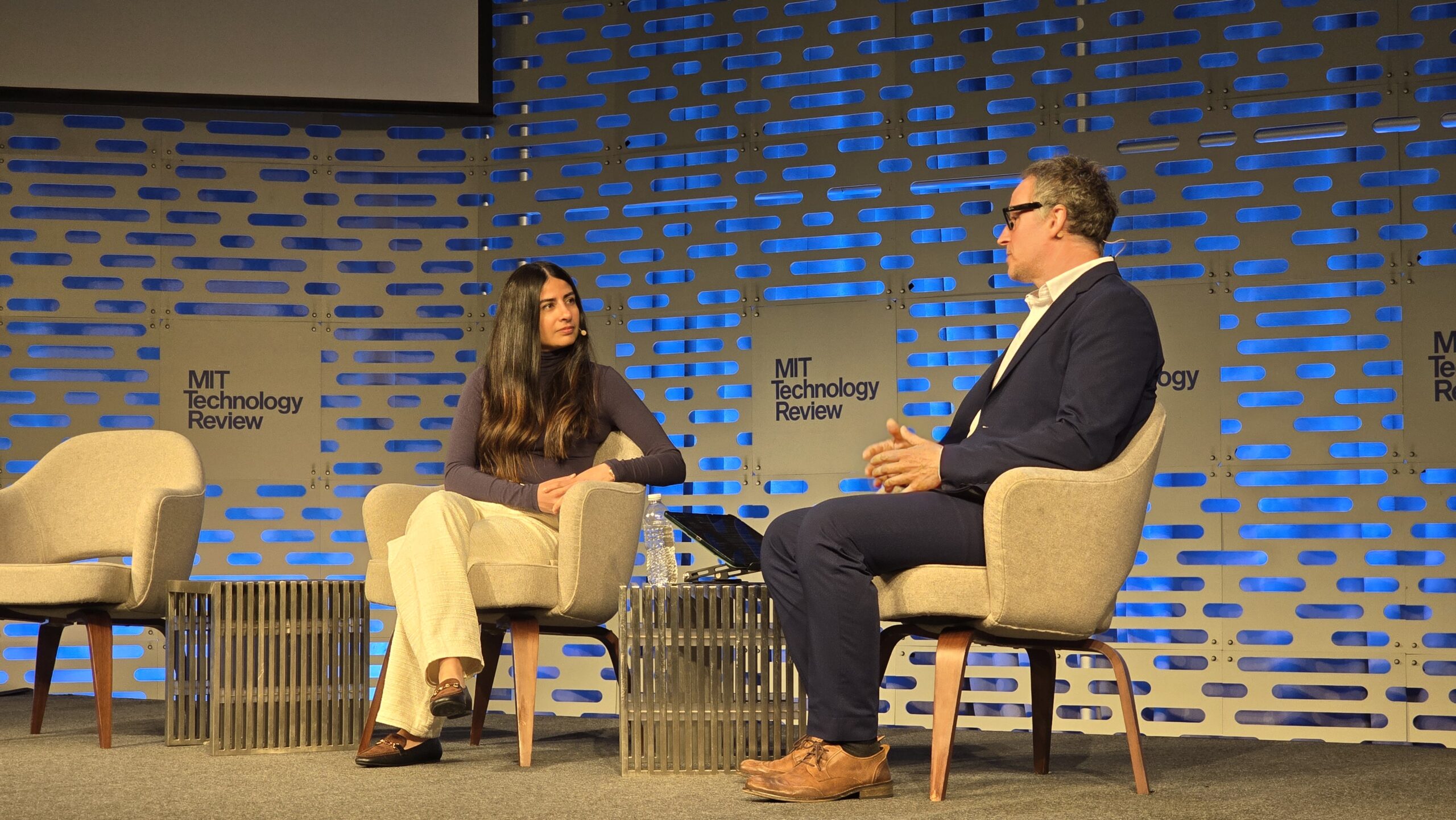Cambridge, MA – MIT EmTechAI: Asha Sharma, Corporate Vice President of AI Platform at Microsoft, is no stranger to translating cutting-edge technology into products that scale. With a background spanning Messenger, Instagram Direct, and now overseeing Microsoft’s AI infrastructure and applications, Sharma shared her perspective on how AI is creating measurable value for businesses-and what’s next.
From Rule-Based Systems to Reasoning Machines
Sharma’s career has tracked the evolution of machine learning from clunky, rule-based systems to today’s advanced models capable of reasoning and autonomous action. She notes that while machine learning has been around for years, the real shift is that “products can now think”-and that means AI can take actions and make decisions that once required teams of specialists.
The result? AI is more capable than ever, and organizations should focus not just on incremental efficiency gains, but on creating entirely new experiences and markets.
AI’s Wide Application-But Start with Constraints
AI’s potential to touch every department and customer use case is both exciting and daunting. Sharma advises organizations to start with clear constraints-such as a set budget or a specific business metric-to drive focused experimentation. This approach forces teams to innovate and push the technology to its limits, rather than getting lost in open-ended exploration.
“Without constraints, it doesn’t force you to innovate and really truly push the technology to its limit.”
The Virtuous Cycle of Learning: Continuous Improvement
Sharma emphasizes the importance of creating a “learning loop” within organizations. The most advanced AI companies don’t just deploy models-they continuously refine them using data from real user interactions, creating a virtuous cycle of improvement. This approach is akin to building a new kind of production system, where feedback constantly informs and enhances the AI’s performance.

Three Levels of AI Transformation
Sharma outlines three tiers of AI adoption she’s seeing among Microsoft’s customers:
- Copilots: AI as an extension of the user, handling tasks like meeting notes, summarization, translation, and more.
- Business Process Automation: Automating routine operations, such as customer support, to drive significant cost savings. Sharma cites hundreds of millions of dollars saved through AI-driven automation.
- Autonomous Agents: The next frontier, where AI agents take on tasks independently. Already, more than 10,000 companies are creating millions of agents with Microsoft’s platform, and Sharma predicts agents will soon outnumber traditional tools in the workforce.
Accountability and Continuous Evaluation
With the rise of autonomous agents, Sharma highlights that accountability and alignment become paramount. Organizations must move from point-in-time measurements to continuous evaluation and human-in-the-loop monitoring, extending established systems of oversight to new AI-driven use cases.
Experimentation and Resource Allocation
Given the rapid pace of AI development, Sharma advises organizations to treat AI adoption like building a new production line-standardizing processes for evaluating and integrating new models, frameworks, and protocols. Whether starting small or making a wholesale bet, the key is to create feedback mechanisms that allow for rapid learning and adaptation.
Advice for the Skeptical: Start Small and Build Applications
For those hesitant to jump in, Sharma recommends personal experimentation with AI tools to build applications. She cautions that waiting for AI to fully mature may mean missing the moment; instead, organizations should build for where AI will be in two years, not just where it is today.
Preparing the Workforce: AI Proficiency as a Core Skill
Sharma sees AI proficiency becoming as essential as computer literacy or coding. She urges educators and organizations to train the next generation to extend themselves with AI, solving real-world problems and evolving how intelligence is applied in the workplace.
The Future: Beyond Today’s Canvas
Looking ahead, Sharma believes we’re only scratching the surface of AI’s potential. As AI moves beyond code and knowledge work into physical spaces, entirely new categories of companies and products will emerge. She’s optimistic that AI will enable breakthroughs-including in healthcare and disease treatment-that were previously unimaginable.
Microsoft’s Mission: Enduring Platform Over Flashy Demos
Sharma makes clear that Microsoft’s goal isn’t just to have the latest demo, but to be the enduring platform organizations turn to for building and deploying AI. With tens of thousands of customers and a focus on enabling every developer and business to realize AI’s value, Microsoft is betting on the long game.
In Summary:
Asha Sharma’s message is clear: AI is already delivering measurable business value, but the real transformation comes from embracing continuous learning, experimentation, and a willingness to rethink how work gets done. Organizations that start now-however small-will be best positioned to ride the next wave of AI-driven innovation.
For more information, please visit the following:
Website: https://www.josephraczynski.com/
Blog: https://JTConsultingMedia.com/
Podcast: https://techsnippetstoday.buzzsprout.com
LinkedIn: https://www.linkedin.com/in/joerazz/


Leave a Reply
You must be logged in to post a comment.